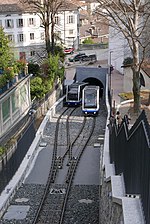BSI Ltd

BSI had been the oldest bank in the Swiss canton of Ticino until its integration into EFG Bank and the following renaming into EFG, which took place in 2017. Founded in 1873 in Lugano as the Banca della Svizzera Italiana, BSI was an institution that specialises in asset management and related services for private and institutional clients. In 1998, the bank became part of the Italian Generali group, one of the world's biggest insurance companies. In July 2014, Generali sold BSI to BTG Pactual for US$1.7 billion, a deal that CEO of the bank, André Esteves stated would make BTG Pactual a “global player in the asset management arena.”In February 2016 EFG International (SIX:EFGN), the global private banking group based in Zurich, announced the acquisition of the Lugano-based private bank, according to an agreement signed on 21 February 2016 with BSI's sole shareholder BTG Pactual. The transaction was finalized on November 1, 2016. Following the closing, BSI's activities have been integrated into EFG, market by market, in Singapore, Hong Kong, Bahamas, Switzerland and Luxembourg. The integration of Monaco's activities is expected to take place by the end of the second quarter 2017. With the integration of the Swiss business, which took place at April 2017, the rollout of the renewed EFG brand has started in all locations where the legal integration of BSI has been completed and those businesses will operate solely under the EFG name.
Excerpt from the Wikipedia article BSI Ltd (License: CC BY-SA 3.0, Authors, Images).BSI Ltd
Via Canova, Circolo di Lugano ovest
Geographical coordinates (GPS) Address Nearby Places Show on map
Geographical coordinates (GPS)
| Latitude | Longitude |
|---|---|
| N 46.0041 ° | E 8.9525 ° |
Address
Via Canova 2
6900 Circolo di Lugano ovest, Molino Nuovo
Ticino, Switzerland
Open on Google Maps






